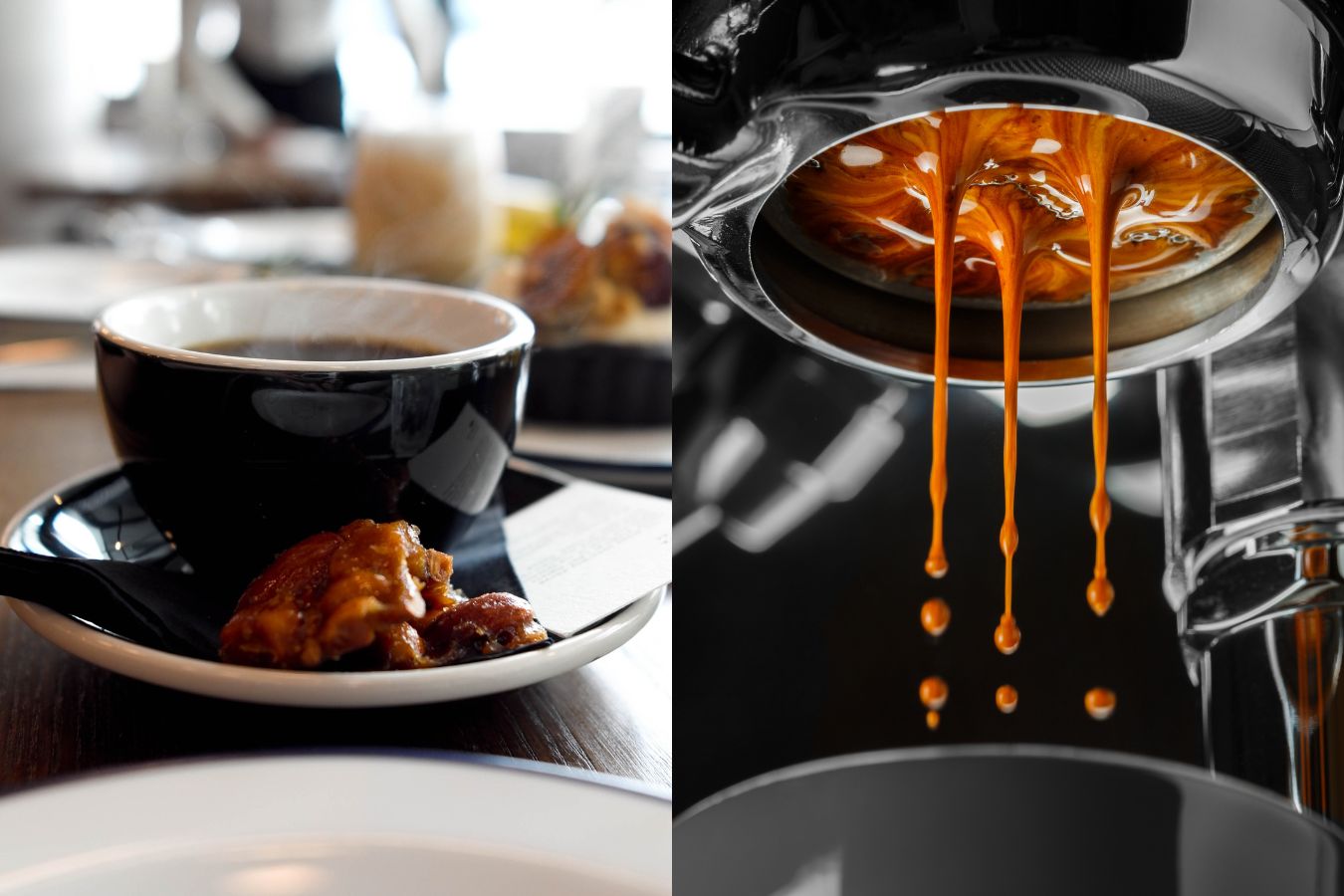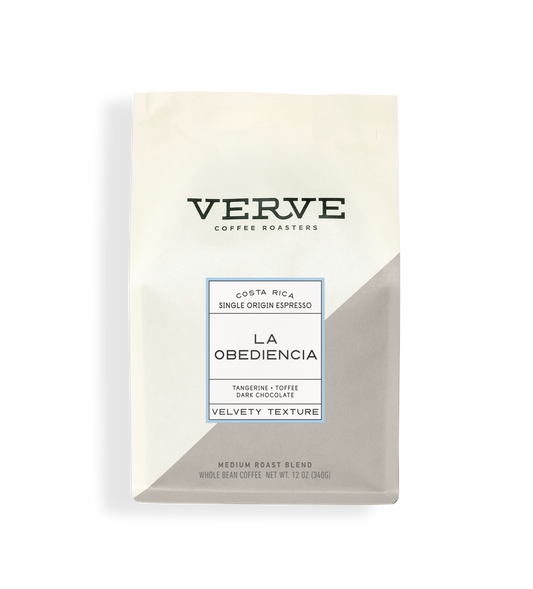Matching Food and Desserts with SOE Single Origin Espresso
Matching Food and Desserts with SOE Single Origin Espresso
Blog Article
Coffee Beans 101: Whatever You Required to Learn About Coffee and Blended Coffee Beans
When it concerns coffee, recognizing the subtleties of coffee and combined beans can change your daily mug. You'll find the distinct characteristics of Arabica and Robusta beans, and just how each effects taste and caffeine content. From the growing procedure to toasting strategies, every step contributes in your coffee experience. What makes the perfect brew? Allow's check out the crucial components that add to an outstanding mug of coffee.
Understanding Coffee Beans: Varieties and kinds
When diving into the world of coffee, comprehending the kinds and varieties of coffee beans is crucial for every lover. Arabica beans are recognized for their smooth, complicated tastes and lower high levels of caffeine web content, making them a favorite amongst coffee connoisseurs.
Within these varieties, you'll locate different local selections, each bringing distinct features. Ethiopian Yirgacheffe uses intense floral notes, while Colombian beans offer a well-balanced taste account. As you explore, remember to take note of handling methods like washed or all-natural, as they can significantly influence the final preference. By familiarizing on your own with these beans and their flavors, you'll elevate your coffee experience and make even more informed selections in your brewing journey.
The Expanding Process: From Seed to Bean
When you explore the journey of coffee, everything beginnings with seed option methods that set the structure for top quality. From there, growing and gathering play essential duties in guaranteeing the beans prosper. Finally, handling techniques transform those harvested cherries into the coffee beans you enjoy.
Seed Selection Strategies
Selecting the best seeds is essential for generating top notch coffee beans, as it lays the structure for the whole growing process. You need to start by picking seeds from respectable resources that prioritize high quality and genetic variety. Look for ranges known to prosper in your certain environment and soil conditions. Take notice of the seed's age and storage space conditions, as fresh seeds have a tendency to sprout better. When feasible, go with natural seeds to decrease exposure to hazardous chemicals. Think about the disease resistance of different ranges, as this can substantially impact your yield. Do not wait to seek advice from with neighborhood farmers or specialists to gain insights into the ideal seed choices for your area. This understanding will boost your coffee-growing experience.
Farming and Harvesting
As you support your coffee seeds into thriving plants, understanding the growing and harvesting process is crucial for accomplishing the finest taste and top quality. Start by planting your seeds in well-draining soil, preferably in a shaded location to safeguard them from straight sunshine. As your plants expand, keep consistent wetness, and bear in mind their need for nutrients. Prune frequently to promote air flow and healthy development.
Hand-picking is typically the finest technique to ensure only the ripest cherries are chosen. Timing is necessary; collecting also early or also late can influence the taste profile of your beans.

Processing Techniques Explained
As soon as you have actually collected your coffee cherries, the next crucial action is processing them to transform those vivid fruits into the beans you'll brew. There are 2 primary methods: the dry process and the damp procedure. In the dry procedure, you spread out the cherries out in the sunlight to dry, enabling the fruit to ferment and present one-of-a-kind tastes to the beans. On the various other hand, the damp process includes getting rid of the fruit instantly and fermenting the beans in water, leading to a cleaner taste. After handling, the beans are hulled, arranged, and usually dried once more. Each approach impacts the flavor account, so exploring with both can help you discover your favorite mixture. Understanding these techniques is key to appreciating your coffee experience.
Toasting Methods: Exactly How Flavor Is Established
When it pertains to roasting coffee beans, comprehending roast levels is key to disclosing their distinct tastes. Each toasting technique impacts the scent and boosts the flavor growth process, offering you a richer coffee experience. Let's discover just how these aspects integrated to elevate your everyday brew.
Roast Levels Explained
Roast levels play an important duty in forming the flavor profile of your coffee. You'll take pleasure in intense level of acidity and fruity notes when you choose a light roast. As you transfer to a tool roast, you'll see an equilibrium of sweet taste and complexity, typically highlighting delicious chocolate or sugar flavors. Dark roasts, on the various other hand, supply strong, great smoky attributes with much less level of acidity, making them abundant and durable. Each level arises from various roasting times and temperature levels, affecting the beans' chemical structure. By understanding these levels, you can better select a coffee that matches your taste preferences. Try out different roasts to discover which one reverberates with you, boosting your general coffee experience and satisfaction.
Influence On Aroma
The roast degree not just influences the taste of your coffee however additionally greatly impacts its scent. When you select a light roast, you'll often discover brilliant, flower notes that can make your coffee odor fresh and vivid. As the beans dim, the fragrance changes; a tool roast highlights much more well balanced, caramelized aromas, while a dark roast often tends to include vibrant, great smoky touches. Each toasting strategy launches different unstable compounds, shaping like it exactly how your coffee smells. Additionally, the freshness of the beans plays a vital function; newly roasted coffee releases more fragrant oils, boosting that luring fragrance. Pay interest to the roast level-- it's key to revealing the complete fragrant experience of your brew.
Taste Advancement Refine
As you check out the flavor growth process, you'll uncover that toasting techniques play a crucial duty in shaping the preference account of your coffee. The roasting temperature level and time directly affect the acidity, sweet taste, and bitterness of the beans. Light roasts maintain more of the bean's initial tastes, highlighting fruity and floral notes. Medium roasts equilibrium acidity and body, offering a well-shaped flavor. Dark roasts, on the various other hand, bring out vibrant, smoky attributes while decreasing the bean's inherent top qualities. During toasting, chain reactions, like the Maillard response and caramelization, transform the beans and improve their intricacy. Trying out various roasting levels can help you find your perfect mixture, so don't hesitate to taste and find the abundant range of flavors!
Coffee vs. Blended Coffee: Key Distinctions
Coffee and combined coffee each offer special experiences that accommodate various tastes and preferences. Coffee is a focused coffee made forcibly warm water with finely-ground coffee beans, causing an abundant, bold flavor and a creamy layer of crema on the top. It's usually delighted in as a shot or utilized as a base for drinks like lattes and cappuccinos.
On the various other hand, combined coffee incorporates numerous beans from various areas, developing an extra well balanced taste profile. You'll commonly locate blends that highlight body, level of acidity, or sweet taste, making them flexible for different brewing methods. While espresso focuses on strength, mixed coffee may provide a wider series of flavors that can change with each sip.
Ultimately, your option between espresso and blended coffee come down to your individual choice. Whether you hunger for a fast jolt or a leisurely cup, both options have something scrumptious to use.

Brewing Techniques: Unlocking the Perfect Cup
When it involves brewing coffee, discovering the right method can change your experience and elevate your mug. Each developing strategy has its one-of-a-kind charm and can significantly influence your coffee's flavor and scent. Making use of a French press enables you to take pleasure in a full-bodied and rich brew, while a pour-over approach supplies a clean, intense cup with unique flavors.
If you like coffee, spending in a quality maker can aid you master the art of pulling shots. For ease, a single-serve pod system uses speed without compromising preference.
Don't forget regarding chilly brew, which delivers a smooth, much less acidic coffee perfect for warm days. Experiment with various approaches to discover what resonates with your palate.
Tasting Notes: Determining Taste Profiles
Exactly how can you truly value your coffee if you do not recognize what flavors to search for? Tasting notes are your overview to comprehending the complicated world of coffee. When you drink, take note of the preliminary flavors that strike your taste buds. You could detect fruity notes, like berry or citrus, or perhaps a nutty touch. As you proceed to taste, observe just how the flavors evolve-- this is recognized as the "surface." Some coffees might leave a chocolatey or caramel aftertaste, while others might have a brilliant, clean surface.
Consider the body of the coffee, too; is it light and airy or thick and syrupy? Don't fail to remember acidity; a brilliant level of acidity can include sprightliness, while a reduced level of acidity could provide a smoother experience. By determining these taste profiles, you'll strengthen your link with each cup, making coffee sampling a delightful trip of exploration.

Tips for Selecting and Keeping Coffee Beans
Saving and selecting coffee beans appropriately can substantially enhance your brewing experience. Begin by picking top quality beans that match your preference - SOE.
Once you have your beans, store them in a closed container to stop direct exposure to light, air, and wetness. A dark, awesome place functions best, so prevent maintaining them in the fridge or freezer, as this can introduce moisture. Just grind the quantity you require to preserve freshness; whole beans keep flavor longer than pre-ground coffee.
Lastly, try to utilize your beans within 2 to 4 weeks after opening up for peak preference. Complying with these ideas will certainly assure your coffee remains delightful and flavorful, elevating your day-to-day mixture to brand-new elevations.
Regularly Asked Concerns
Exactly How Long Do Coffee Beans Stay Fresh After Toasting?
Coffee beans remain fresh for regarding two weeks after toasting - SOE. You need to top article save them in a closed container, away from light and dampness. Afterwards, their taste and scent begin to lessen substantially

Can I Mix Different Coffee Bean Varieties?
Absolutely, you can mix various coffee click this site bean selections! Explore blends can boost tastes and create an unique preference account. Just see to it to stabilize the toughness and features of each range for the very best outcomes.
What Is the Suitable Work Size for Coffee?
For espresso, you'll desire a fine grind dimension, regarding the appearance of salt. This permits suitable extraction, causing a rich, savory shot. Experiment a bit to locate what fits your preference best!
Exactly How Does Elevation Affect Coffee Bean Flavor?
Elevation affects coffee bean taste by affecting the growth rate and chemical composition. Higher elevations result in slower maturation, which boosts acidity and complexity, offering your coffee a vibrant and distinct taste you will not fail to remember.
Exist Decaffeinated Versions of Espresso Beans?
Yes, there are decaffeinated variations of coffee beans. You can delight in an abundant coffee taste without the high levels of caffeine kick. Just look for "decaf" blends at your regional coffee shop or specialized shop.
Coffee Beans 101: Every Little Thing You Need to Know About Espresso and Blended Coffee Beans.
When diving right into the world of coffee, recognizing the types and varieties of coffee beans is necessary for every enthusiast.When it comes to toasting coffee beans, understanding roast levels is crucial to disclosing their distinct tastes. Espresso is a focused coffee brewed by compeling hot water with finely-ground coffee beans, resulting in a rich, vibrant flavor and a velvety layer of crema on top.On the various other hand, blended coffee combines numerous beans from various areas, producing a much more well balanced taste profile.
Report this page